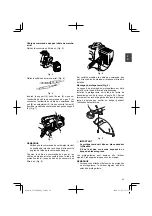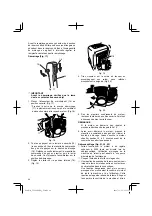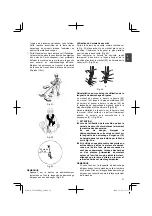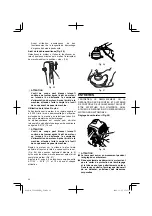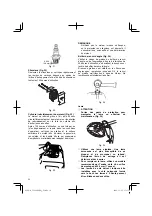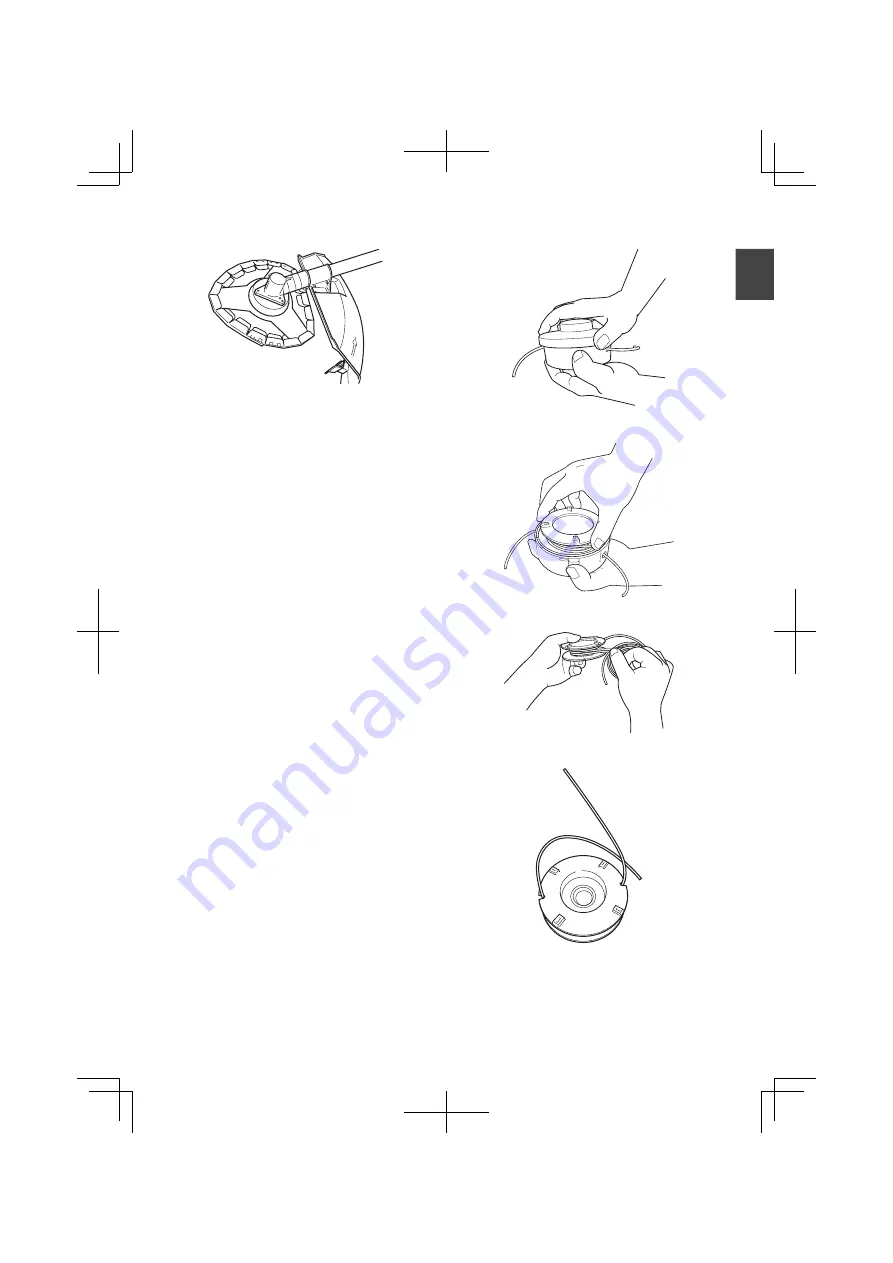
15
G
B
F
R
E
S
Fig. 35
○
Use
a
sharp
blade.
A
dull
blade
is
more
likely
to
snag
and
thrust.
Replace
the
fastening
nut
if
it
is
damaged
and
hard
to
tighten.
○
When
replacing
blade,
purchase
one
recommended
by
Tanaka,
with
a
25.4
mm
(one
inch)
fi
tting
hole.
○
When
installing
a
saw
blade,
always
face
the
stamped
side
up.
In
the
case
of
a
3
tooth
blade,
it
can
be
used
on
either
side.
○
Use
the
correct
blade
for
the
type
of
work.
○
When
replacing
blades,
use
appropriate
tools.
○
When
cutting
edges
become
dull,
re-sharpen
or
fi
le
as
shown
in
the
illustration.
Incorrect
sharpening
may
cause
excessive
vibration.
○
Discard
blades
that
are
bent,
warped,
cracked,
broken
or
damaged
in
any
way.
NOTE
When sharpening blade it is important to
maintain an original shape of radius at the base
of the tooth to avoid cracking.
Nylon
head
Nylon line replacement
○
Remove the cutting body cap by pushing inward
the locking tabs on the side of the nylon head
(Fig. 36). Take out the spool (Fig. 37), hook the
new nylon line into the hole of the spool, then
wind it around the spool in two stages (Fig. 38).
When the nylon line has been wound around the
spool, temporarily fasten it in the opening of the
spool at about 4
˝
(10 cm) from the end. (Fig. 39)
Then thread the nylon line through the hole on
the side of the nylon head and place the cutting
body cap in reverse order of the cap removal.
Pull the right and left nylon lines until they are
secured about 6
˝
– 6-5/16
˝
(15 - 16 cm) from the
end. (Fig. 41)
Fig. 36
Fig. 37
Fig. 38
Fig. 39
000Book̲TCG40EAS(P)̲̲US.indb 15
000Book̲TCG40EAS(P)̲̲US.indb 15
2009/11/27 17:15:52
2009/11/27 17:15:52























